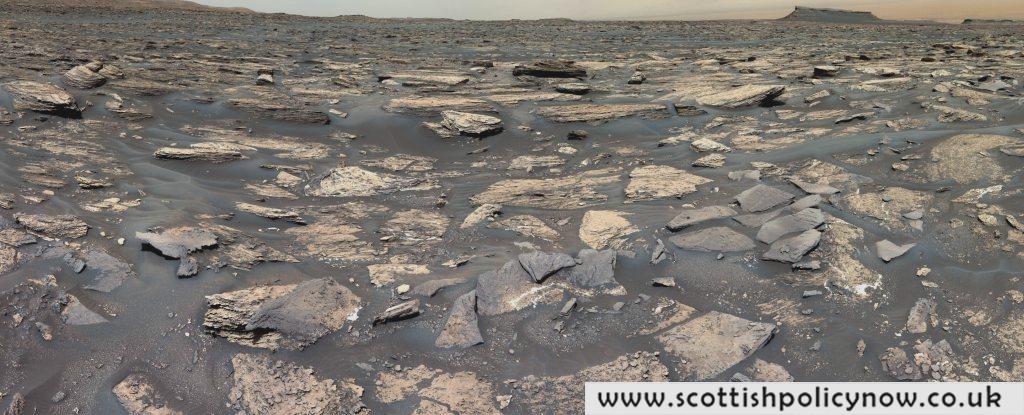Rocks examined by the Curiosity rover in a long-deserted Martian lakebed suggest conditions that were likely habitable billions of years ago.
In the Gale Crater rocks, Curiosity uncovered an unexpected abundance of manganese oxide – a mineral that forms in Earth’s lakes under highly oxidizing conditions which promote manganese crystallization in the presence of oxygen.
This abundance on Mars hints that similar conditions may have existed in the Gale Crater when it was water-filled in ancient times.

“On Earth, these deposits are common due to our atmosphere’s high oxygen content, produced by photosynthetic life and microbes that catalyze manganese oxidation,” explains geochemist Patrick Gasda from Los Alamos National Laboratory.
“On Mars, the absence of life and an unclear mechanism for producing oxygen in the ancient Martian atmosphere make the formation and concentration of manganese oxide here quite mystifying. These findings indicate broader processes at work in the Martian atmosphere or surface water and underscore the need for further research into Martian oxidation.”
Manganese oxide is not only widespread and plentiful on Earth but also plays a crucial role in biological processes. It’s vital for many human biological functions, and almost all life on Earth needs manganese for something.
Some bacteria even use manganese’s oxidation states for energy, enhancing the oxidation process.
Mars, however, lacks significant oxygen today, and no living bacteria have been detected, so the presence of manganese in sedimentary shoreline rocks in Earth-like quantities remains baffling.
Gasda and his team carefully examined the manganese using Curiosity’s ChemCam, which vaporizes minerals with a laser and analyzes the resulting light to identify their composition. They then investigated various ways manganese could have precipitated in the Gale Crater lake, either from lake water or through groundwater in porous sands.
All scenarios considered required highly oxidizing conditions, and the researchers ultimately determined that manganese oxides likely precipitated along a lakeshore under an oxygen-rich atmosphere.
They argue this supports the theory of a habitable, long-lasting lake environment in ancient Gale Crater, noting that manganese oxide formation can span thousands of years depending on oxygen levels.
The source of the oxygen remains a mystery, though it could have been released by early meteorite impacts on Martian surface ice.
These discoveries offer exciting possibilities for finding signs of ancient life on Mars. Microbe-mediated oxidation could have left biosignatures and organic materials in the manganese-rich rocks. The Perseverance rover, now exploring a dried-up delta, might find such evidence during its mission, the researchers suggest.
“The ancient Gale lake environment, as revealed by these rocks, presents a glimpse into a habitable setting eerily similar to some present-day Earth locations,” notes planetary scientist Nina Lanza of Los Alamos National Laboratory.
“It’s striking to find such familiar geological features on ancient Mars.”
This research has been documented in the Journal of Geophysical Research: Planets.








